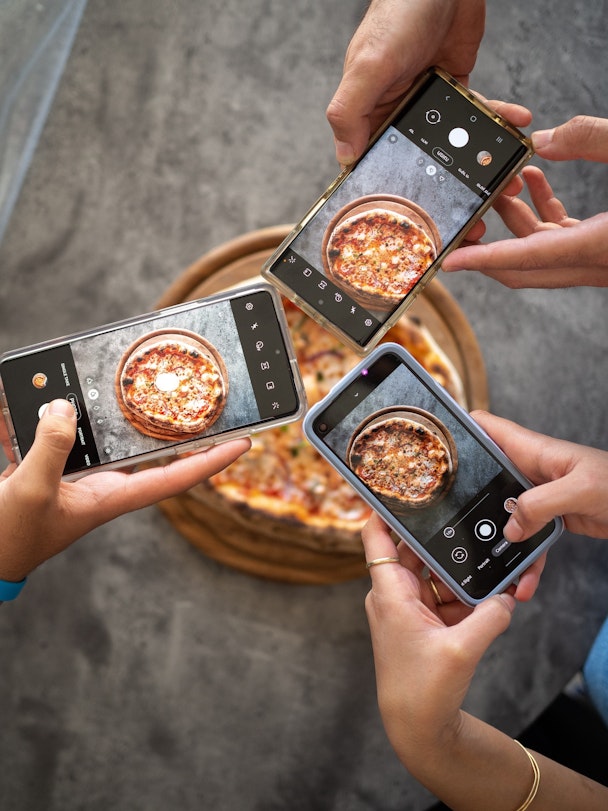How brand marketers can tap into emerging foodie tribes
Sandeep Dutta, vice-president of the insights division at Kantar India, looks at the growing trend of food fanatics and how brand marketers can deploy them well to reach out to a segmented audience.

Deploying foodies in brand marketing can be a key step in getting out awareness of your brand
“What did you have for lunch today?”
“Would you like to have a Crème Brûlée for dessert?”
“Please can you share the recipe for the sourdough bread that you made last week?”
“Can you tell me where can I find organic cilantro?”
These are snatches of conversations that we hear almost every day as we plow through life.
Food was always at the center of our existence, but today it has reached a new level – it is becoming an integral part of our social identities. As a consumer researcher, I see clear signs of this in focus groups when participants are encouraged to talk about their leisure-time interests to help break the ice. There was a time when men talked of sports, travel and occasionally a creative pursuit such as singing, painting or writing. Women’s interests would also include travel, a creative pursuit in addition to home decoration, shopping (mentioned rather abashedly) and cooking new dishes.
Nowadays, in focus groups, every third young adult – man or woman – gleefully introduces themselves as a ‘foodie’. In a focus group in Bengaluru, a 29-year-old man described himself: “I am Sharat, IT programmer, married with one kid, and I am also a foodie.” Followed by a small chuckle.
Who exactly is a foodie? The term ‘foodie’ came to prominence in the humorous paperback The Official Foodie Handbook by Ann Barr and Paul Levy (1984), who defined foodies this way: “A foodie is a person who is very, very interested in food. They don’t think they are being trivial.” Foodies consider food to be an art, on a level with painting or drama. They are different from gourmets, who are typically seen as upper-class snobs known to wax eloquent on elitist fare, such as caviar and wine, and are a vanishing breed.
Foodies are children of the consumer and social media boom and are certainly more democratic and global than the gourmets. A typical foodie is as comfortable discussing the succulent charm of tandoori chicken dished out in a narrow by-lane in Delhi as they are with the seductive aroma of Colombian coffee wafting out of a New York cafe.
What is driving people to include their love for food as a part of their identity?
The answer was succinctly explained by a foodie in a Mumbai focus group: “The ‘F’ in foodie stands for fun and friendly, the moment I say I am a foodie to anyone, people think I will be seen as a social and a fun guy ... someone who enjoys every moment of life ... if I say I am a painter or a writer, they will think I am boring.”
The emerging types of food tribes
Though all foodies tend to be seen as affable, not all foodies are alike in the way they interact and relate with food. For some, food is a way of exploring life and gaining new experiences. They are the ones who are constantly on the lookout for new cuisines, recipes and ingredients. They revel in the act of discovery and creating unique memories, which they religiously share on Instagram. They are the ‘food tourists’.
There is a type of foodie who loves to flaunt their knowledge of and experiences with food that are either highly authentic or exotic or complex – or all of these. They like to be seen as discerning and superior in their understanding and appreciation of food. They are not very different from the erstwhile gourmets, except that they are more democratic in their food choices and can be appreciative of both street food and haute cuisine – provided they find in them some qualities that are not evident to the masses. They can be described as the ‘food snobs’.
There is a sub-tribe of foodies who find immense pleasure in eating and believe that their incessant appetite for good food of any type qualifies them to be foodies. They pride themselves in their hedonistic urge to consume food liberally and seriously subscribe to the belief that we live to eat. They would love to be called the ‘food fanatics’.
Then there is a group of foodies whose mission is to infuse a generous dose of health in everything that they procure, cook and eat. They can be trusted to come up with recipes and dishes that are deceptively healthy (think of butter chicken without the butter), and convince others to embark on a new food trail that promises a healthy lifestyle. They wouldn’t mind being called the ‘food evangelists’.
How can marketers deploy these food tribes?
Foodies are a growing and pulsating cultural tribe, and F&B marketers would do well to target them as consumers or influencers – or both. They are highly active on social media, and that is arguably the best place to find and engage with them, by creating online communities centered around a brand.
The trick is to choose the right foodie types and align brands/products that have a natural fit with them to get the best results, as one size will not fit all. The expectation is that a certain food tribe will keep attracting more of its kind, and over time the community will proliferate and popularize the brand.
Choose the tribe well and with caution
So, a marketer who is planning to launch a range of frozen luxury desserts brands could do well to create a community of ‘food snobs’ with a generous sprinkling of ‘food tourists’ and create a buzz around the scrumptiousness of the desserts in the marketplace. They have to be careful and stay away from the ‘food evangelists’ as they cannot be trusted to espouse the pleasures of devouring a sinful chocolate gateau.
On the other hand, an online community with ‘food evangelists’ would be ideal for a marketer planning to launch a range of mock meat products targeted to those who believe in healthy and environmentally-friendly lifestyles. Essentially, what the marketers need to keep in mind is that there are horses for courses. A marketer keen to promote a brand of regular French fries and other ready-to-fry snacks with attractive price discounts could think of creating a community of ‘food fanatics’ who are known for their over-indulgence with food. Through this kind of community of foodies, the brand could aim to be popular among those who believe in liberal eating and lovable excesses.
Marketers need to keep a close watch on the dynamics of this expanding tribe in social media and tap into the suitable sub-tribe to promote their brands. And then all they have to do is strike the right chord of their gastronomic spirit to get them passionately engaged with their brands.
Sandeep Dutta is the vice-president of the insights division at Kantar India.

